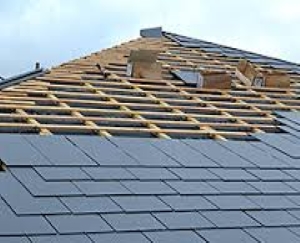Toiture Pro | Tous Droits Réservés. Design & Developed by XOOKOM

Roof renovation can be a significant investment, and depending on the regional heritage, the desired architecture or the meteorological conditions, some tiles will be more advantageous than others. With different compositions and shapes, it is necessary to choose the right tile according to the above mentioned factors in order not to spend repeatedly on your roof.
The tiles are all identical and their pose is quite simple, although for a complete satisfaction it is recommended to consult a professional. The tiles are a great source of isolation all year round and are resistant to both humidity and the high temperatures that can be encountered in the southernmost regions, in order to fully benefit from the comfort of your home, the choice of tiles must be made wisely.
There are several tiles in different materials but three main types can be distinguished:
Clay roof tiles :
-This tile made out of water and clay does not contain any polluting products therefore this choice of roofing guarantees a better air circulation inside a house. It is not surprising that they cover the majority of houses in France and in Mediterranean Europe. Its warm tones match most architectures and its advantage lies in its resistance. Indeed, a clay tile roof does not require regular maintenance as its color does not change unlike other types of tiles made with harmful products. The price of clay tiles can easily climb, the cost varies between 45 and 60 euros per m2 but remain a smart choice since their lifespan is very long and should not be changed before 50 years.
-Concrete tiles. They are composed of sand, clay, limestone and mineral pigments. Its manufacturing method offers a smooth finish and guarantees a remarkable waterproofing, which prevents the propagation of mold between the tiles. Consequently, a concrete roof requires almost no maintenance, only surveillance a couple of times a year. During rainy seasons, concrete is more exposed to some degradation and it is not uncommon to notice some alterations in color. However, one of the advantages of concrete tiles is the ability to color them and thus manufacture tiles in a desired color.
Their price remains relatively affordable. On average between 30 and 45 euros per m2. The durability is guaranteed at 30 years, after which a more important supervision will be required or even a total renovation.
-Slate tiles Last comes the slate tiles, within which there are two sub-categories; natural slate, also called metamorphic rock. Its extraction depends on the region and according to its origin the material can be of different textures and then synthetic slate, necessarily lighter than natural slate, is composed of organic fibers, minerals, cement and water. It remains an alternative to natural slate but will require much more maintenance after 30 years, where natural slate will have a lifespan of 100. Slate is a very resistant material. Although very expensive, it is the guarantee to have a safe roof in terms of waterproofing, isolation and stability, no matter the temperature, a slate roof will resist. If the choice is made on this roof, the call of a professional is essential, despite its simple handling, this tile requires a preliminary preparation of the roof and special skills during the installation. Its drawback is its very high price, it is estimated at 100 and 150 euros for a square meter, but it is worth remembering that a slate roofing makes the architecture luxurious and can exist in several forms to associate a particular style, it is also very long-lasting and does not require any renovation or maintenance.
In short, choosing a tile roof made of natural materials is the most profitable and especially ecological option. Depending on the region and its heritage, certain architectural obligations will have to be
respected. This is why tile roofing makes this adaptation easier since the tile can be made in various colors and shapes. In the south, one will tend to find “canal tiles” or “panne tiles” or “roman tiles” used in houses where the slope is low or even impossible. In the north, flat tiles are more common, especially for roofs with a slope greater than 35°. Nevertheless, a tile roof is difficult because of its heaviness. Before considering this option, it is important to ensure that the foundation of the house is capable of supporting the weight. This choice implies a framework capable of supporting the weight and its
maintenance can sometimes be complicated even if it is quite possible to replace a single tile in case of damage.